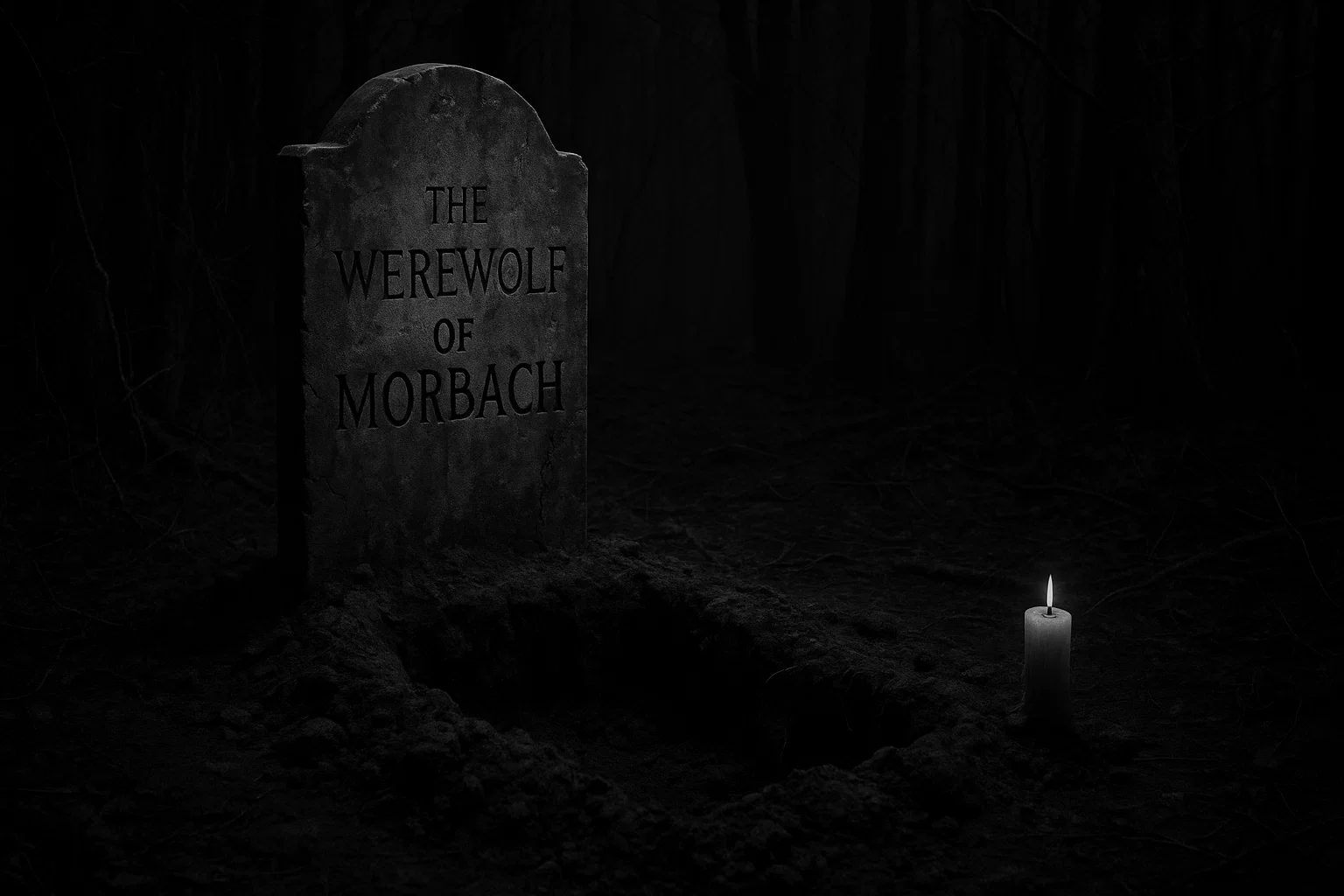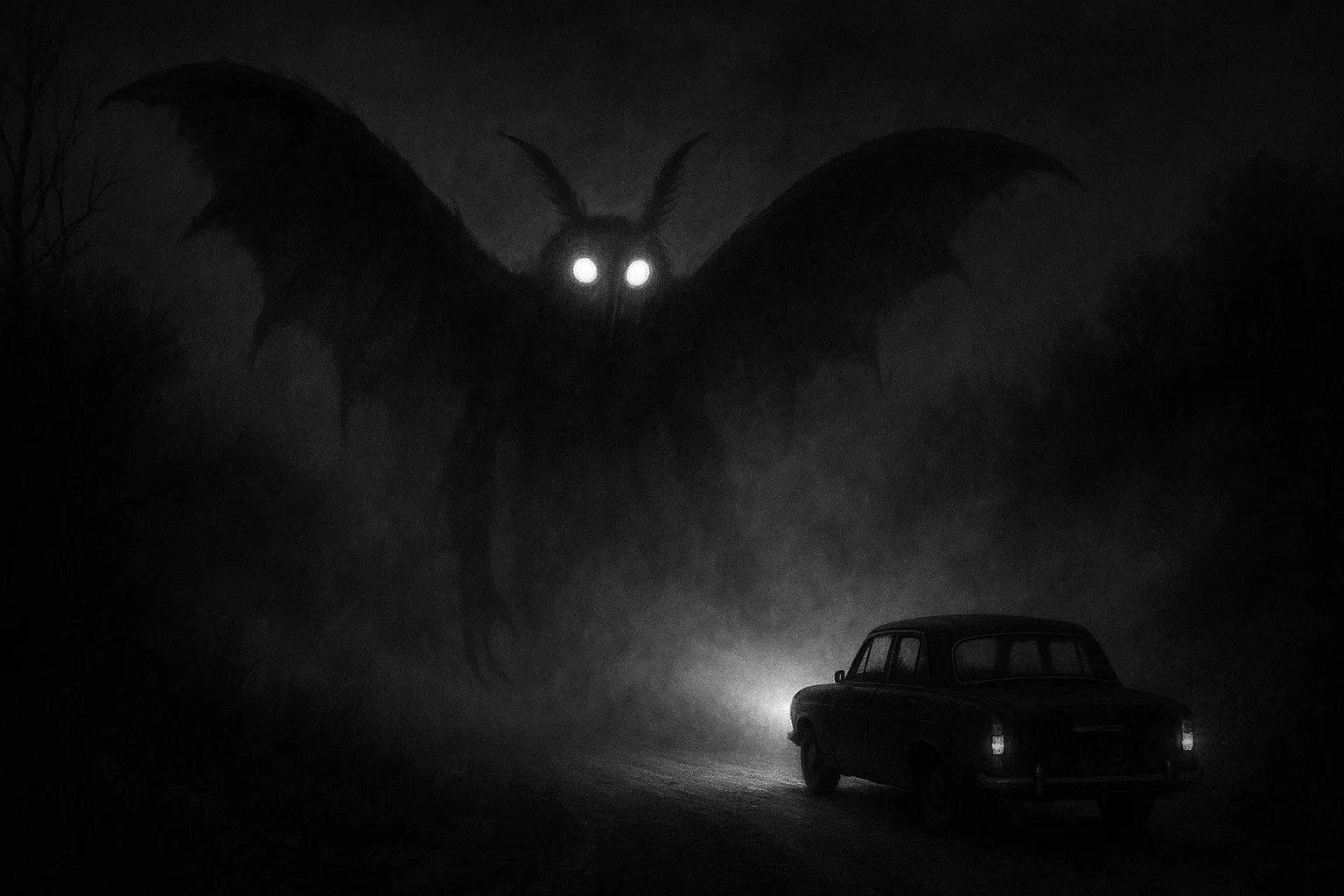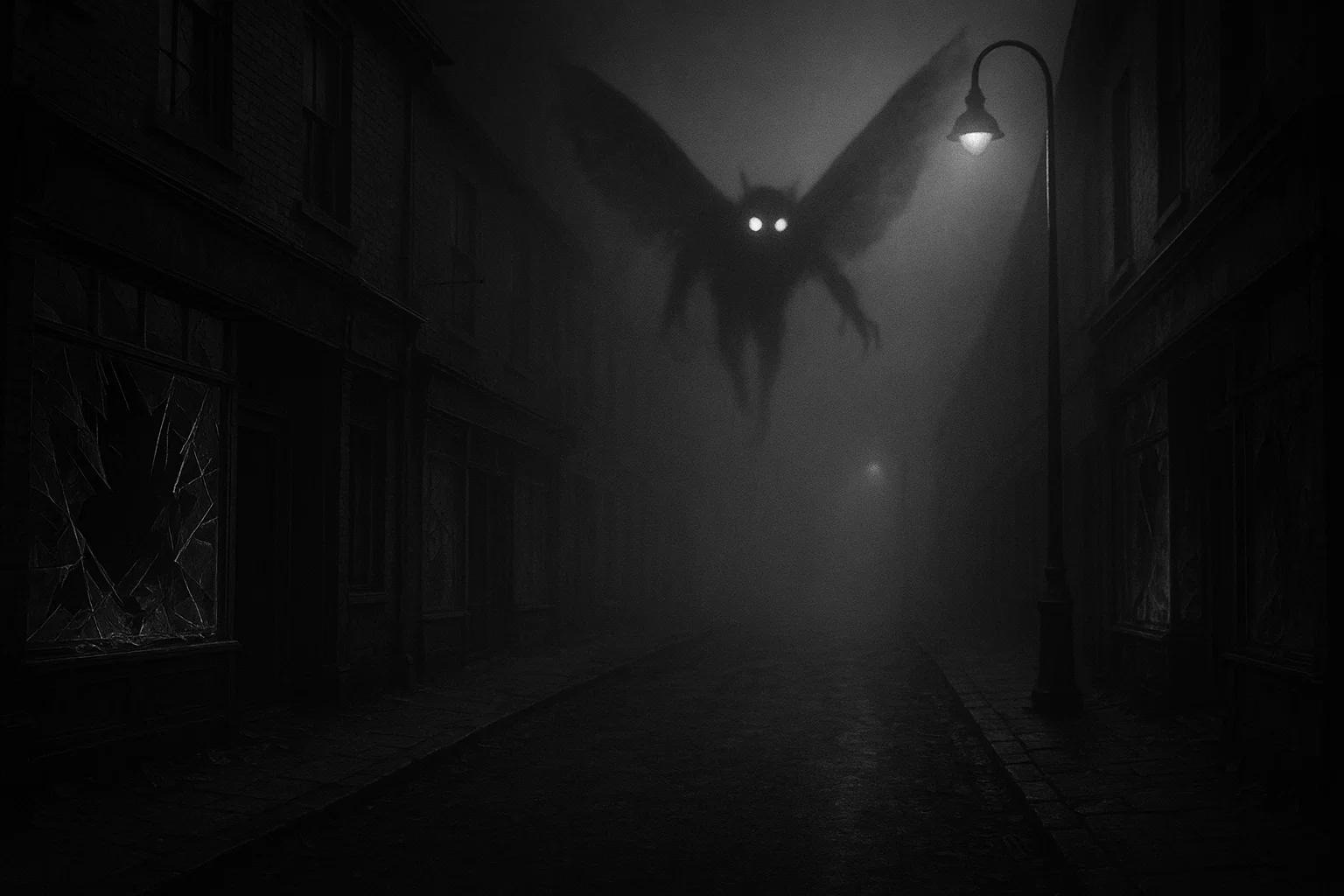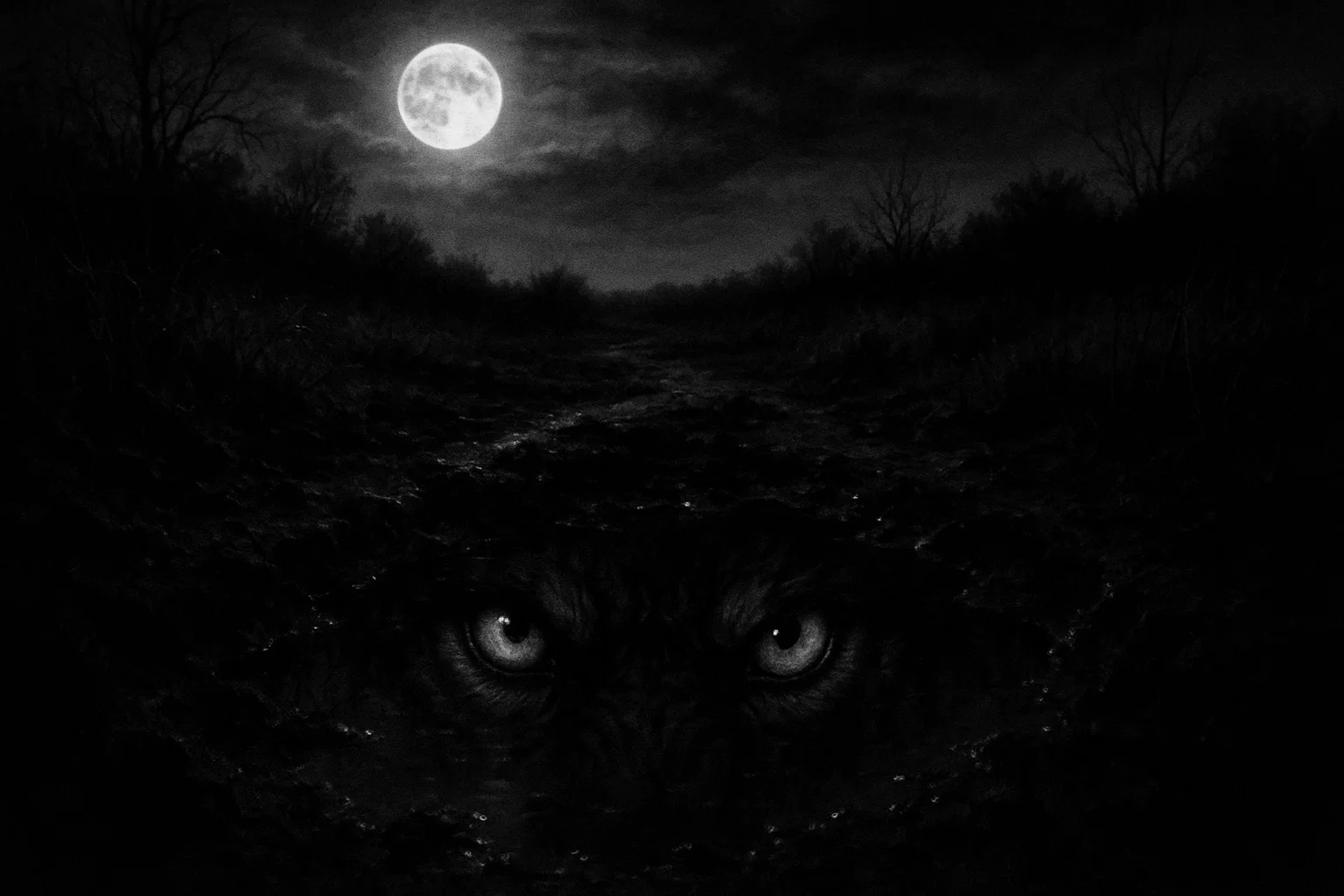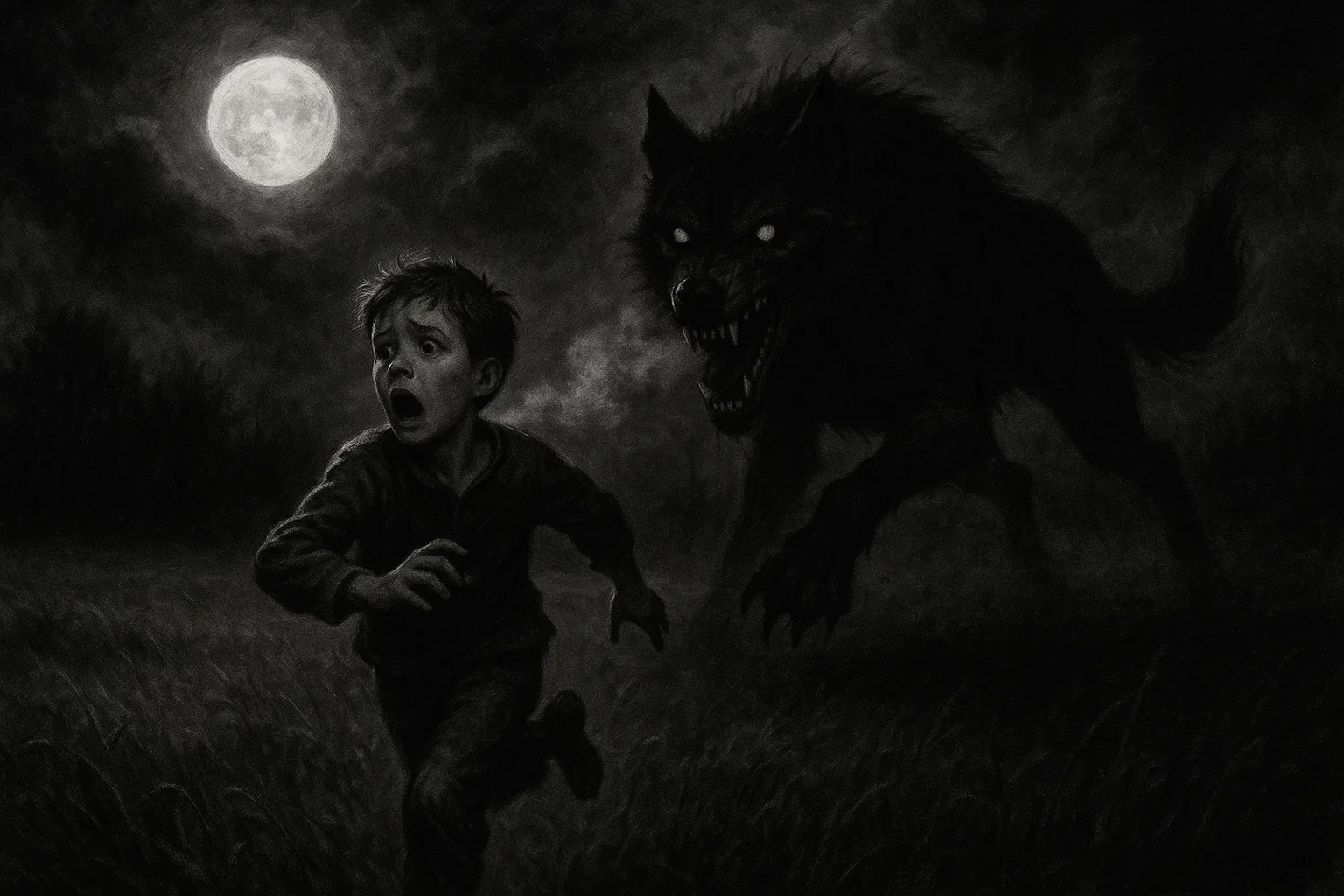The Werewolf of Morbach, known as the Morbach Monster, is a bone-chilling legend from Wittlich, Germany, centered on Thomas Johannes Baptist Schwytzer, a Napoleonic deserter cursed in 1812 to become a savage wolf.
This harrowing tale of lycanthropy, steeped in blood-soaked horror and village panic, culminates in a violent vigilante killing and a haunting 1988 sighting. Dive into the dark heart of this supernatural saga, where fear and folklore collide.
Table of Contents
Overview
| Aspect | Details |
|---|---|
| Name | Werewolf of Morbach (Thomas Johannes Baptist Schwytzer) |
| Location | Wittlich and Morbach, Bernkastel-Wittlich, Rhineland-Palatinate, Germany |
| Time Period | 1812 (primary legend); 1988 (modern sighting at Hahn Airbase) |
| Occupation | French soldier in Napoleon’s Grande Armée, later deserter and bandit |
| Family Status | No known family; fathered Martin via Elizabeth Beierle (post-curse, 1812) |
| Physical Description | Gaunt, scarred face, piercing eyes; wolf form: colossal, bristling fur |
| Accusation | Shapeshifting into a wolf via curse, committing murder, rape, cannibalism |
| Victims | Farmer’s family (Hans, Anna, Karl, Johan Weber), Elizabeth Beierle, ~20 villagers, livestock; 1988: three deer |
| Modus Operandi | Transformed at full moon, attacked with jaws snapping, claws slashing |
| Discovery | Farmer’s wife’s curse after slaughter; 1988 sighting by U.S. airmen |
| Witnesses | Peter Beierle, Klaus Schmidt, Maria Klein, Johann Fischer (1812); U.S. airmen (1988) |
| Key Figures | Schwytzer, Anna Weber (cursed him), Wilhelm Braun (militia captain), Father Matthias (priest) |
| Primary Sources | Wittlich oral traditions, church logs (1812), Hahn Airbase reports (1988) |
| Secondary Sources | 19th-century folklore collections, 20th-century retellings, military anecdotes |
| Related Cases | Peter Stumpp (1589), Beast of Gévaudan (1764–67), Gilles Garnier (1573) |
Who Was the Werewolf of Morbach?
The Werewolf of Morbach, Thomas Johannes Baptist Schwytzer, was a French soldier born around 1785 in Alsace, a battle-hardened veteran of Napoleon’s Grande Armée.
Known for his scarred face, piercing eyes, and gaunt frame, Schwytzer deserted in 1812 after the Russian campaign’s collapse, turning to banditry in the Bernkastel-Wittlich region. His ruthless reputation as a fugitive made him a feared outcast before his cursed transformation.
Schwytzer’s early life was marked by poverty and war. Raised in a rural hamlet, he joined the French army in his teens, enduring grueling campaigns.
His desertion led him to Morbach’s forests, where he led a gang of Russian deserters, plundering villages. The farmer’s wife’s curse—after a heinous murder—cast him as a wolf at each full moon, cementing his infamy as a monstrous predator in local folklore.
Werewolf of Morbach’s Story
In 1812, the Napoleonic Wars left the Rhineland in disarray, with deserters like Schwytzer terrorizing rural communities.
The Werewolf of Morbach legend, set in Wittlich, weaves a ghastly narrative of banditry turned supernatural horror. Schwytzer’s cursed transformation sparked a reign of terror that convulsed the region.
You May Also Like: Who Was Jan van Calster? The Man Accused of Werewolf Crimes
Early Life and Background
Thomas Johannes Baptist Schwytzer was born around 1785 in a dilapidated hovel in Alsace, where famine and war shaped his youth. Likely uneducated, he worked as a farmhand before enlisting in Napoleon’s Grande Armée around 1805.
His military service—marked by bloody battles in Austria and Prussia—left him scarred and embittered. By 1812, the Russian campaign’s failure drove him to desert, fleeing to the Bernkastel-Wittlich region’s shadowy forests.
Schwytzer’s bandit gang, including Russian deserters like Ivan Petrov, raided villages, stealing grain and livestock. Known for his menacing glare and tattered uniform, Schwytzer was shunned by villagers, who whispered of his diabolical aura.
His isolation and violent past made him a prime suspect for supernatural crimes, as lycanthropy fears gripped the Rhineland.
Crimes and Accusations
In spring 1812, Schwytzer’s gang stormed a farmhouse near Wittlich, targeting Hans Weber (45), his wife Anna (40), and sons Karl (16) and Johan (14). On 20 April, they slashed Hans’s throat, leaving a crimson gash that pooled on the floorboards.
Karl and Johan were hacked with sabers, their limbs severed and entrails spilling like ghastly ropes.
Anna, screaming in anguish, cursed Schwytzer: “May you prowl as a rabid wolf each full moon!” Schwytzer crushed her skull with a cudgel, her blood-soaked body slumping in the firelight.
By June 1812, villagers reported a colossal wolf with bristling fur and fiery eyes. On 15 July, Elizabeth Beierle (20), a farmer’s daughter, was raped by the werewolf in a moonlit field.
Peter Beierle, her brother, found her mangled body—throat torn, limbs gashed, flesh shredded. Elizabeth, pregnant with Martin, survived but bore livid scars.
On 20 August, Klaus Schmidt discovered his flock of 12 sheep disemboweled, their viscera strewn across blood-drenched grass. Johann Fischer, a shepherd, saw the beast mauling a cow, its jaws dripping gore.
From July to September 1812, ~20 villagers were attacked, with 10 fatalities. On 5 August, Greta Klein (12) was pounced near Morbach, her chest ripped open, ribs splintered.
Maria Klein, her mother, found the gory remains, wailing in horror. On 12 September, farmer Heinrich Braun was gored, his abdomen eviscerated, entrails dangling. Witnesses, like tavern keeper Wilhelm Muller, reported unholy howls and a spectral wolf with claws gleaming.
The beast’s ferocity—throats mangled, faces devoured—sparked mass hysteria.
Discovery and Community Response
Peter Beierle’s discovery of Elizabeth’s mutilated form on 16 July ignited village panic. Father Matthias, Wittlich’s priest, linked the attacks to Anna Weber’s curse, preaching of diabolical forces.
On 17 July, candlelit vigils filled churchyards, with bells tolling to ward off evil. Captain Wilhelm Braun rallied militia, arming them with muskets, pitchforks, and blessed silver.
Villagers barricaded homes, leaving fields untended. Anna Mertens, a seamstress, saw a wolf-like shadow near Wittlich’s outskirts, its snarling maw haunting her dreams.
By September, taverns buzzed with terrified whispers, and children were confined indoors. The community demanded justice, blaming Schwytzer for the carnage.
You May Also Like: Auvergne Werewolf: Real Curse or Witch Hunt?
The Hunt
From 1–15 October 1812, hunters scoured Morbach’s forests. On 10 October, Klaus Schmidt spotted the beast near a stream, its fur matted with blood.
On 15 October, Captain Braun led 50 militiamen to a clearing, where they ambushed the werewolf. Muskets roared, and silver bullets pierced its flank. The beast howled, claws thrashing, before collapsing in a gory heap. Its mangled pelt was paraded through Wittlich, dripping crimson.
Werewolf of Morbach’s Trial
Unlike historical werewolf trials, the Werewolf of Morbach faced no formal trial. Schwytzer’s vigilante killing was the community’s verdict, driven by fear and folklore. The absence of legal proceedings reflects the lawless era.
Capture and Interrogation
On 15 October 1812, militiamen ensnared the werewolf in a steel trap near Morbach. Captain Braun fired silver bullets, felling the snarling beast. No interrogation occurred, as villagers believed Schwytzer reverted to human form upon death, revealing his scarred corpse.
Father Matthias examined the body, noting jagged wounds but no occult relics. The lack of formal capture—no shackles or gaol—underscored the mob’s fury.
Legal Proceedings
No court convened, as village justice prevailed. Father Matthias and Captain Braun declared Schwytzer the werewolf, citing Elizabeth Beierle’s rape and livestock slaughter.
The community—Maria Klein, Peter Beierle—condemned him based on witness accounts and Anna Weber’s curse. The absence of a magistrate mirrored wartime chaos, where vigilante action replaced legal process.
Sentence and Execution
On 16 October 1812, villagers desecrated Schwytzer’s corpse. Klaus Schmidt severed the head with an axe, crimson spraying. Wilhelm Braun drove a stake through the heart, splintering ribs.
The body was buried at a crossroads under moonlight, with a shrine and an eternal candle to bind his spirit. The mangled remains were displayed in Wittlich’s square, a ghastly warning. Father Matthias blessed the grave, ensuring no resurrection.
1988 Incident
On 3 September 1988, U.S. airmen at Hahn Airbase noticed the shrine’s candle extinguished. A perimeter alarm sounded, and Private John Carter saw a massive wolf—9 feet tall, eyes blazing—leap a 7.5-foot fence.
Three deer were found gored, their throats ripped and entrails scattered. Sergeant Michael O’Rourke reported eerie howls, but the military dismissed it as a wild animal. Airmen relit the candle, fearing the Morbach Monster’s return.
You May Also Like: Types of Werewolves Ranked by Power and Origin
Werewolf of Morbach vs Other Werewolves
| Werewolf Case | Region | Period | Accusation Details | Unique Element |
|---|---|---|---|---|
| Peter Stumpp | Bedburg, Germany | 1589 | Killed 16; magical belt; tortured, broken on wheel, beheaded. | Sadistic execution; massive victim count. |
| Gilles Garnier | Dole, France | 1573 | Ate four children; demonic aid; burned at stake. | Famine-driven cannibalism; hermit lifestyle. |
| Werewolves of Poligny | Poligny, France | 1521 | Three men ate children; devil’s ointment; burned at stake. | Group accusation; ointment use. |
| Jean Grenier | Bordeaux, France | 1603 | Boy attacked children; wolfskin gift; imprisoned as insane. | Youthful accused; insanity plea spared execution. |
| Jacques Roulet | Angers, France | 1598 | Killed boy; salve transformation; deemed insane, not executed. | Insanity defense; blood-soaked discovery. |
| Thiess of Kaltenbrun | Livonia, Estonia | 1692 | Fought devils as werewolf; whipped, banished. | Benevolent werewolf; claimed God’s Hound. |
| Beast of Gévaudan | Gévaudan, France | 1764–67 | Killed 100+; hunted, no human culprit; unresolved. | Cryptozoological mystery; national hunt. |
| Hans the Werewolf | France | 1582 | Livestock attacks; confessed, executed. | Obscure case; livestock focus. |
| Werewolf of Châlons | Châlons, France | 1598 | Lured children; cannibalism; burned at stake. | Infamous cannibal; records destroyed. |
| Manuel Blanco Romasanta | Galicia, Spain | 1853 | 13 murders; lycanthropy claim; life imprisonment. | Psychological defense; Spain’s serial killer. |
| Jan van Calster | Spanish Netherlands | 1598 | Bit two children; acquitted, no execution. | Rare acquittal; non-lethal attacks. |
| Claudia Gaillard | Burgundy, France | 1598 | Attacked villagers; tortured, burned at stake. | Female werewolf; no transformation witnessed. |
Schwytzer’s cannibalistic crimes mirror Stumpp and Garnier, reflecting diabolical fears. The village panic aligns with Gévaudan’s hysteria. The child victims echo Grenier and Roulet.
Schwytzer’s vigilante death contrasts with Stumpp’s tortured execution or van Calster’s acquittal. The 1988 sighting is unique, unlike historical trials. The shrine and candle set it apart from Romasanta’s imprisonment.
Was the Werewolf of Morbach a Real Werewolf?
The Werewolf of Morbach is a folkloric tale, not a documented case. Oral traditions and 19th-century accounts describe Schwytzer’s curse and crimes, but no court records or parish registers exist. The 1988 sighting relies on unofficial military reports, suggesting mythic embellishment.
Historical sources:
- Wittlich Oral Traditions (1812): Village elders recounted Schwytzer’s banditry and curse, passed down through generations.
- Church Logs (1812): Father Matthias’s sermons mention a werewolf scare, urging vigils against Satanic forces.
- 19th-Century Folklore Collections: German folklorists documented a Morbach werewolf, citing Anna Weber’s curse.
- 1988 Hahn Airbase Reports: Private John Carter and Sergeant Michael O’Rourke’s unofficial accounts describe a wolf-like creature.
- Modern Retellings: 20th-century books and military anecdotes amplify the Morbach Monster legend.
You May Also Like: Inokashira Park Curse: The Mysterious Park That Breaks Couples
Accuracy and Inaccuracies
The 1812 crimes are plausible, as banditry was rife post-Napoleon. Hans Weber’s family slaughter and Elizabeth Beierle’s rape align with deserter violence, but the curse and transformation are folkloric.
Victim counts (~20) are exaggerated, with no verified deaths. The 1988 sighting—gored deer, fence leap—is likely a bear or large dog, per zoological analysis. The shrine’s candle is a cultural relic, not evidence.
Conclusion
The Werewolf of Morbach is a mesmerizing saga of 19th-century terror and modern mystery. Schwytzer’s cursed legacy and the 1988 sighting captivate imaginations, reflecting human fears of the unknown. The shrine’s candle burns as a symbol of vigilance.
Schwytzer was no werewolf, but a bandit mythologized by folklore. The Morbach Monster remains a haunting reminder of how chaos and superstition shape enduring legends.

